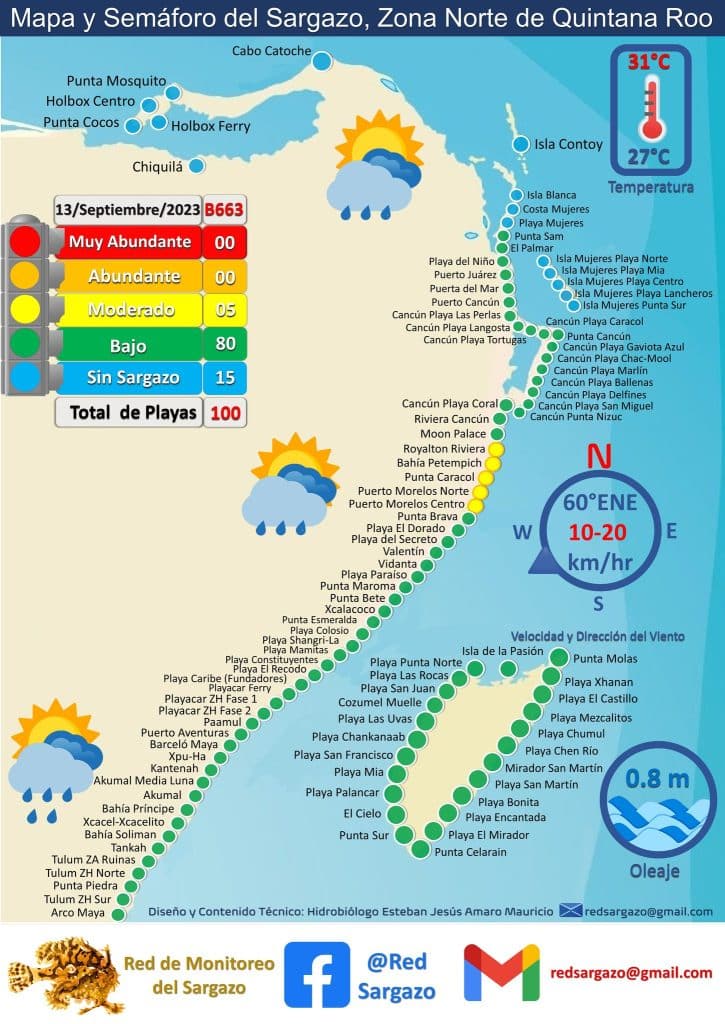The 2023 Sargassum season started earlier than expected, starting in February. Traditionally, this seaweed season begins in early spring due to the rise in ocean temperatures that stimulates seaweed reproduction.
Beaches most affected by high concentrations of algae include Playa del Carmen, Tulum, Sian Ka’an and certain areas between Cancun and Puerto Morelos. However, it is extremely difficult to accurately predict which beaches will be affected and to what extent, as conditions change almost daily and often without notice.
Read on for the latest information on the sargassum situation on these beaches.
Latest Cancun Seaweed Updates:
September 22:
The seaweed season in the Cancun area is coming to an endMost beaches are clean or contain very small amounts of sargassum seaweed
September 20 – Tulum to divert sargassum before it reaches beaches
Tulum Municipal President Diego Castanon has reportedly announced the new comprehensive containment plan called Tulum Against Sargassum, reports the Cancun sun. Under the plan, local authorities will try to divert the algae away from the region’s pristine beaches.
Five new anti-sargassum ships and other equipment have been delivered to Tulum. They complement the existing fleet of vessels that catch sargassum with trawls to prevent it from reaching the coast. “Today we delivered five vehicles and tools to Zofemat Tulum, marking a milestone in our fight against these macroalgae,” Castanon said. QuintanaRooHOY. “Our goal is to maintain beaches of quality and sustainability.”
July 18: Latest news and photos from the beaches of Quintana Roo
The latest reports from satellites suggest that Cancun and other parts of the Mexican Caribbean should have less seaweed this summer. It is predicted that the entire seaweed season could end earlier than normal. (Source: nitu.mx)


Quintana Roo Sargassum CARD July 8

June 12: Latest photos and update from Quintana Roo beaches
Here are a few photos of some of the most popular beaches in the Mexican Caribbean. (Source: Sargasso seaweed updates (Cancun, PDC, Tulum FB GROUP)



Updates Archives:
Update on seaweed in Cancun (September 29, 2022)
Mid-October, The sargassum seaweed season is expected to end on the Mexican Caribbean coast.
Update on seaweed in Cancun (September 16)
A survey by the Quintana Roo Department of Navy (Semar) shows that Sargassum seaweed is becoming less common on Cancun beaches as of this week.
In collaboration with the Gulf and Caribbean Oceanographic Institute, a study was conducted to determine how much sargassum could eventually enter the Mexican Caribbean.
The lowest amounts of sargassum are often found on Isla Mujeres, Puerto Morelos and Othon P. Blanco, while the highest concentrations are found near the well-known beaches of Solidaridad, Cozumel and Tulum.
- The beaches of Isla Mujeres are already seaweed-free. (More information)
- According to data, the number of seaweed in the Mexican Caribbean will soon decrease (More info)
Latest images (Source):

Latest sargassum seaweed map, September 16 (Source):
Be able to
Ojeda, who recently called the problem “alarming,” said authorities are preparing for the largest amount of sargassum spotted on Cancun beaches since 2018.
“The situation in the country, as described by the official: on Isla Mujeres there is zero sargassum; in the municipality of Benito Juárez, on the beach of Chac Mool, 5 percent was detected yesterday; in Puerto Morelos, on Pelicanos beach, 20 percent; at Playa San Martin in Cozumel, 20 percent; in the municipality of Solidaridad, El Recodo beach, 30 percent; in Playa Maya in Tulum, more arrivals of this algae have been reported, 40%; while in Othón P. Blanco, in El Mahahual, 15%.”
May 18-19: Latest photos from the beaches of Quintana Roo (source: Sargasso seaweed updates Riviera Maya FB GROUP)



May 5-6: Latest photos from the Cancun Area beaches (source: Sargasso seaweed updates Riviera Maya FB GROUP)
The situation is slightly better this week, with more cleaning efforts and more nets installed in the Playa del Carmen and Tulum areas.
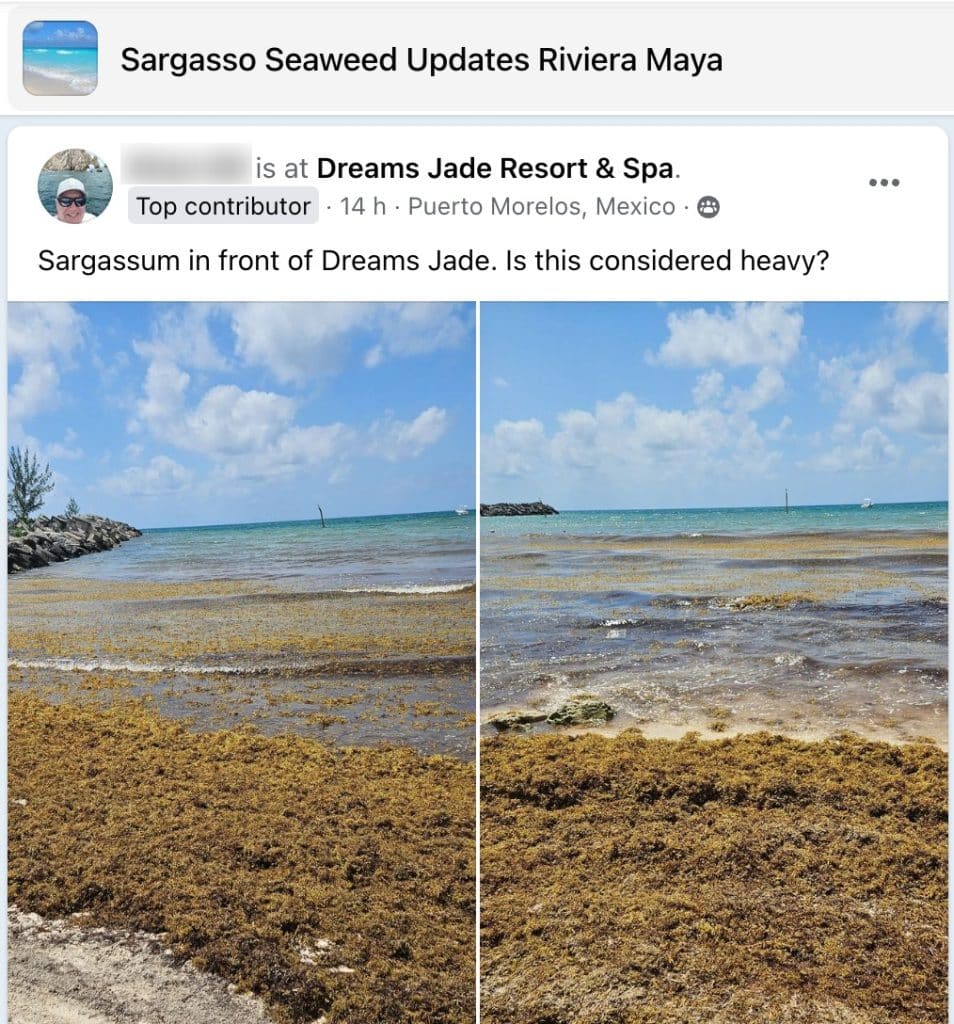
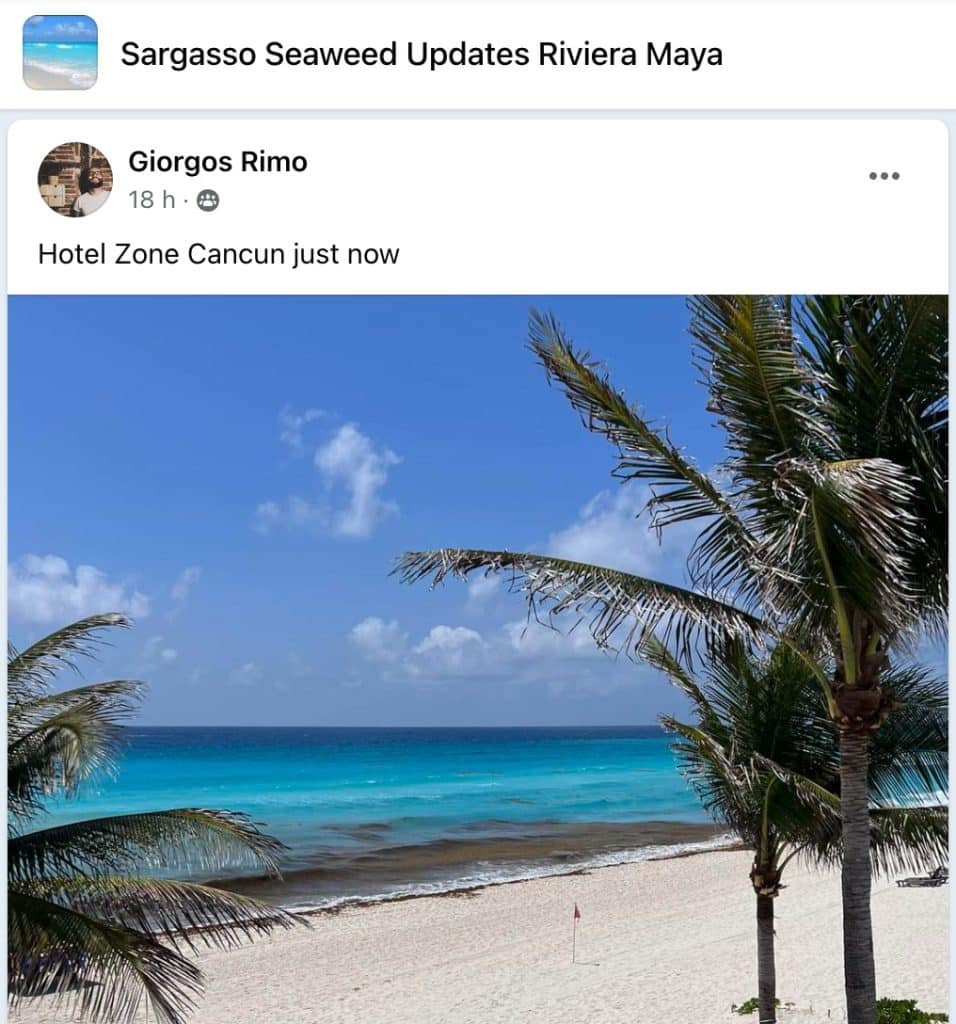
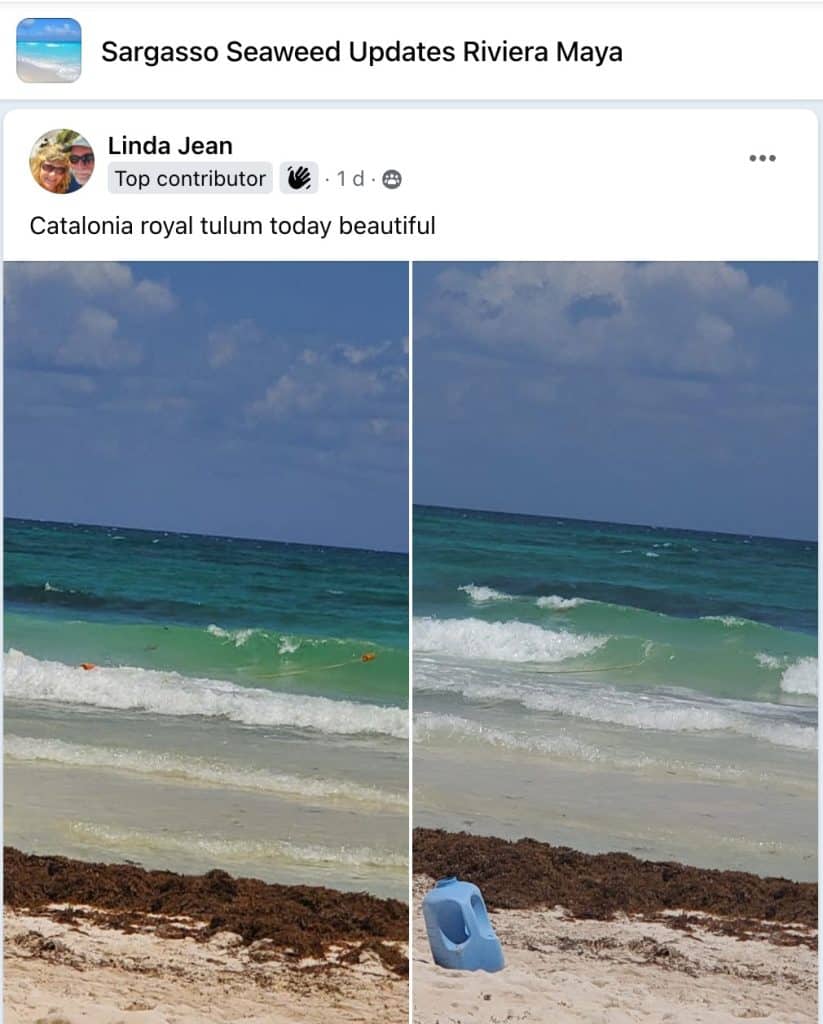
April 14: Latest photos from the Cancun Area beaches (source: Sargasso seaweed updates Riviera Maya FB GROUP)
The current situation is quite unpredictable, as it changes with the wind and currents and also depends on whether a beach cleaning takes place in the morning. Here are a few photos from the last 24 hours.
April 2: New wave of seaweed hits Cancun coast (Photo + Video from Playa del Carmen)
A new wave of sargassum seaweed arrived on the coast of Cancun last night. Here’s a photo + video from the morning (April 2) in Playa del Carmen by Jeremiah Rygh (Instagram: Discover together with Jeremiah):
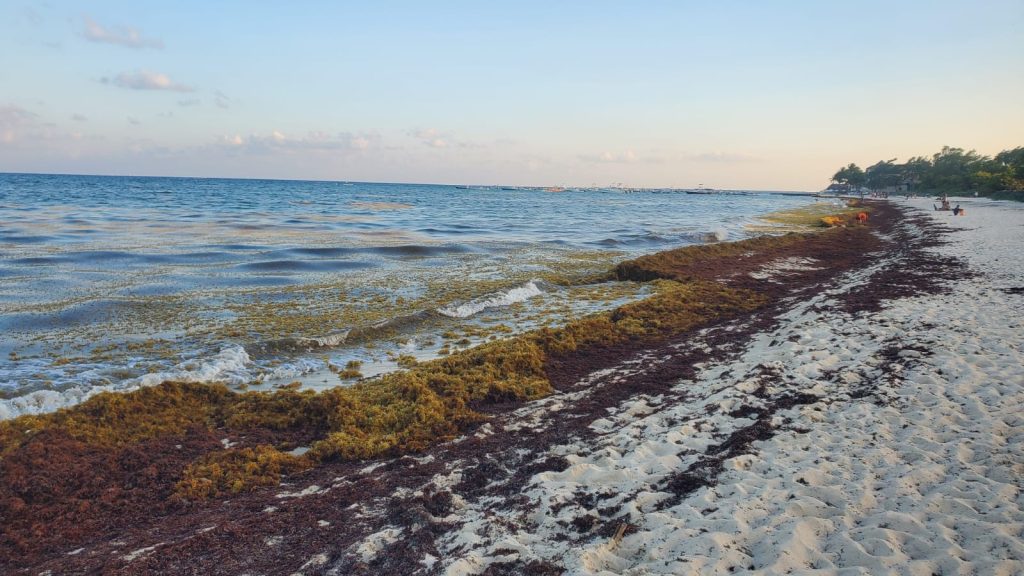
Sargassum CARD April 2
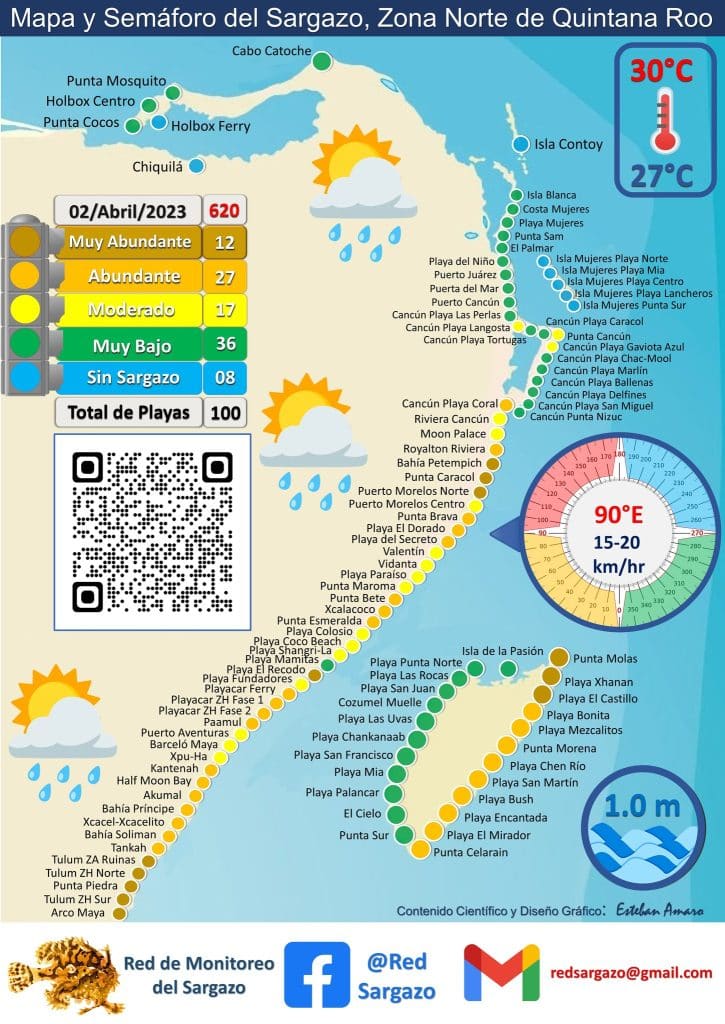
March 19: A 5,000 mile wide mass of seaweed Heading towards Florida and Mexico
According to NBC News’ Denise Chow, a massive cluster of brown seaweed stretching 5,000 miles is approaching North America and posing a potential threat to beaches in Florida, Mexico and the Caribbean.
Although the vast collection of seaweed known as the Great Atlantic Sargassum Belt is not a new phenomenon, experts have identified its current size as particularly substantial. In addition, the blanket of sargassum, which drifts across the Atlantic Ocean, is reportedly arriving in coastal areas much earlier than usual this year. Brian Lapointe, an ecologist from Florida Atlantic University, warned that this development “does not bode well for a clean beach summer in 2023,” in an interview with Livia Albeck-Ripka and Emily Schmall of the New York Times.
Latest seaweed map and photos from the Cancun coast, March 19, 2023 (Source: FB Save the Monitoreo del Sargazo de Quintana Roo
Playa del Carmen update
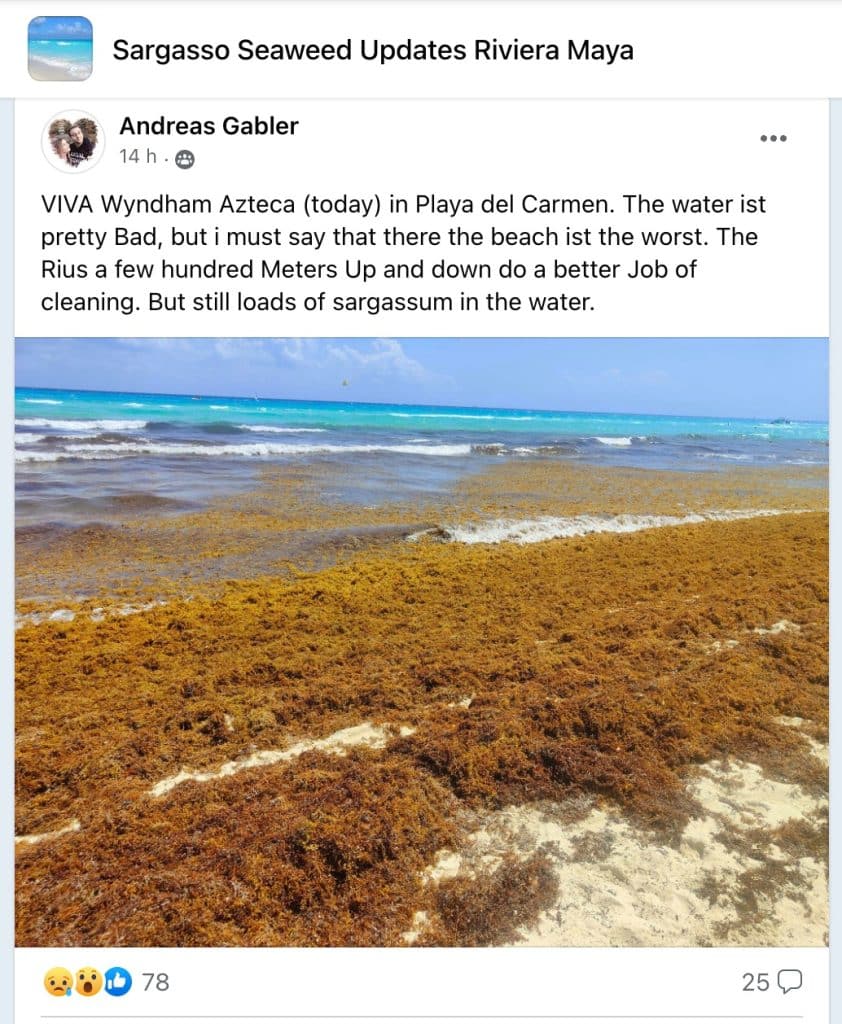
Cancun update
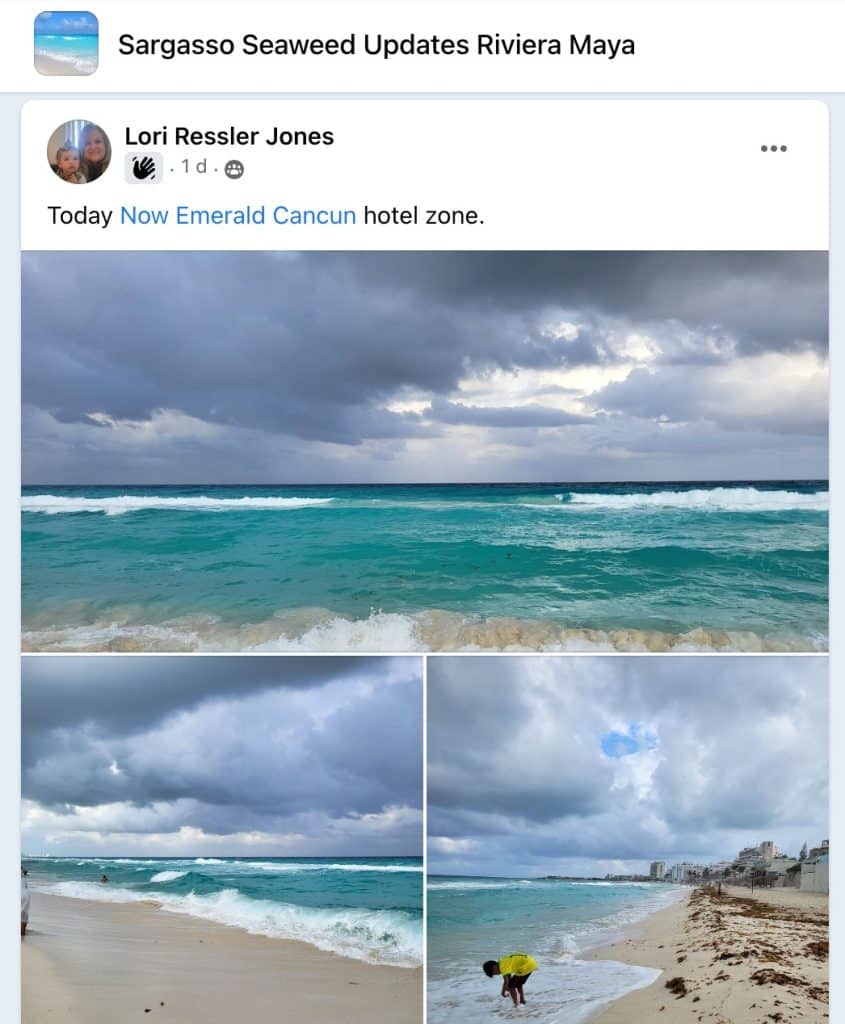
February 14: As Sargassum Plagues Coast of Cancun, these beaches remain at a low level
The Mexican Caribbean has seen an increase in Sargassum seaweed in recent days. The beaches in the hotel zone in Cancun are still relatively clean and well-maintained, but many beaches on the coast, such as Cozumel, Playa del Carmen, Akumal or Playacar, already have high seaweed content.
Here is the list of beaches with the lowest levels:
- Isla Mujeres
- Playa las Perlas
- Playa Langosta
- Holbox Island
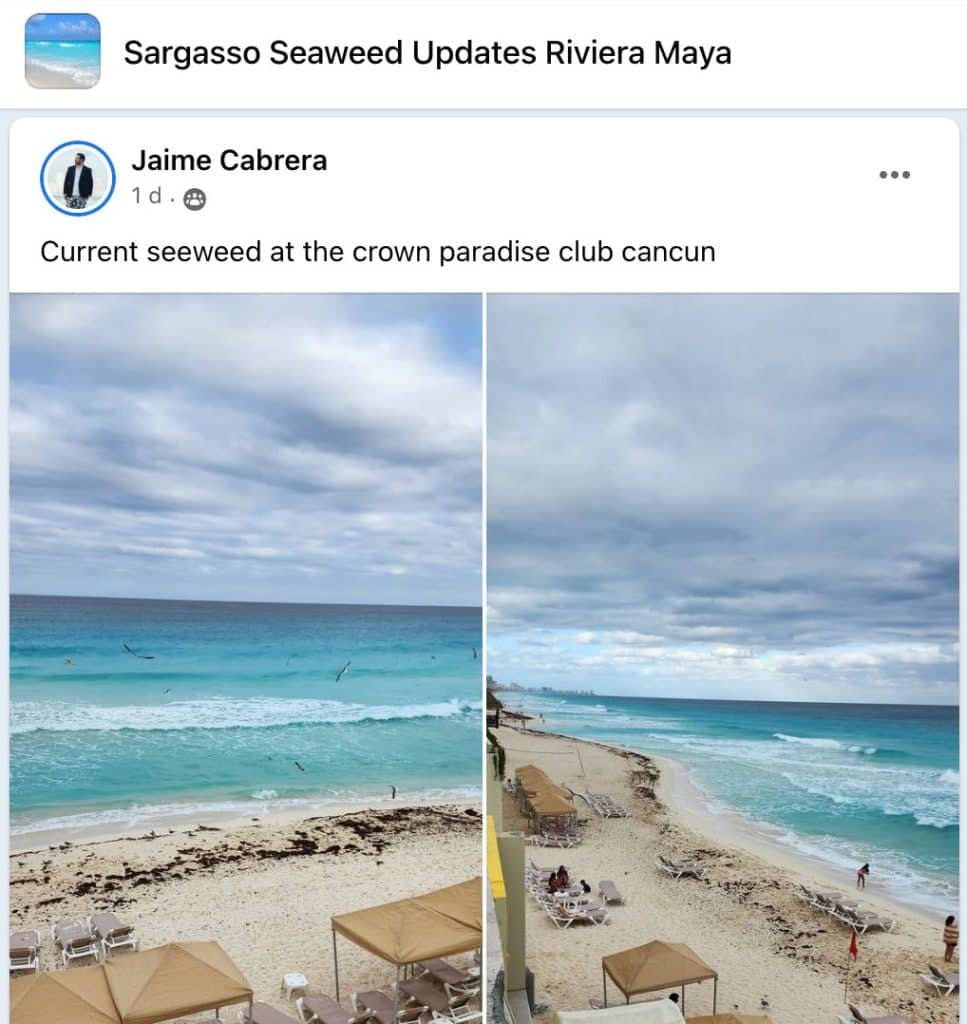
January 28: Playa del Carmen sargassum seaweed update (PHOTO & VIDEO)
Playa del Carmen’s beaches are experiencing an influx of seaweed, but the cleanliness of the beaches varies depending on location and the presence of organized cleaning services.
The video and photo below are from Coco Beach in Playa del Carmen (morning January 28).
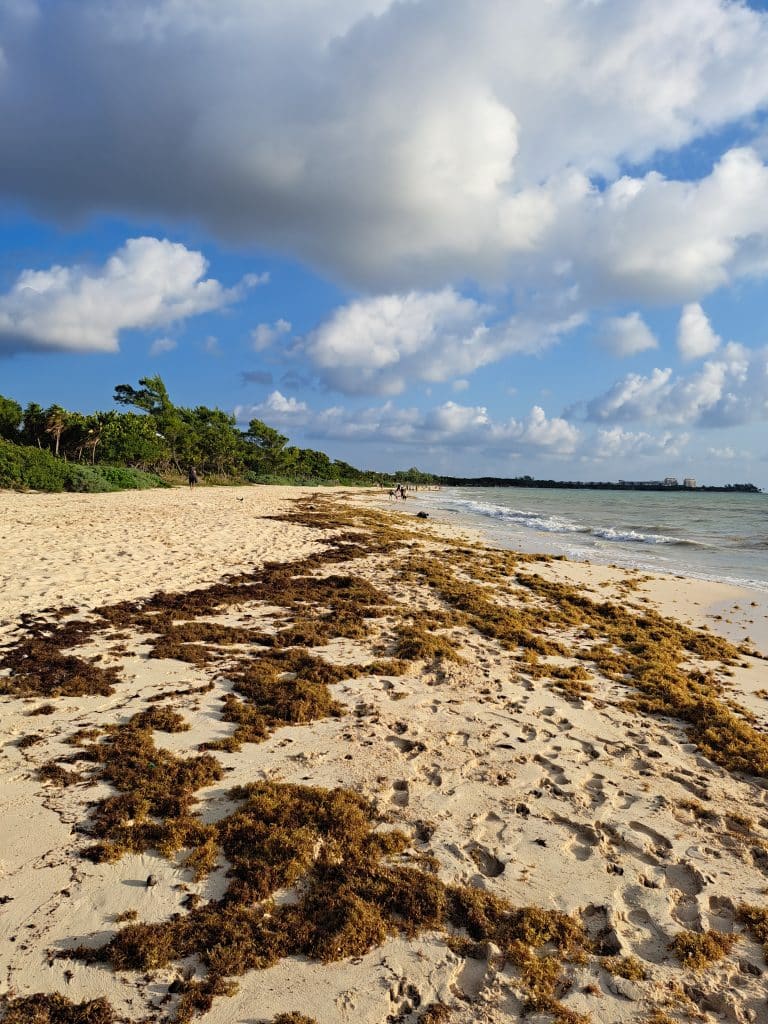
January 20: Cancun’s coast received its first wave of seaweed in 2023
On January 14, the first sargassum seaweed of 2023 occurred found it on beaches in the Riviera Maya, including Puerto Morelos and Playa del Carmen, earlier than previously forecast.
Latest seaweed map off the coast of Cancun, January 16, 2023 (Source: FB Save the Monitoreo del Sargazo de Quintana Roo
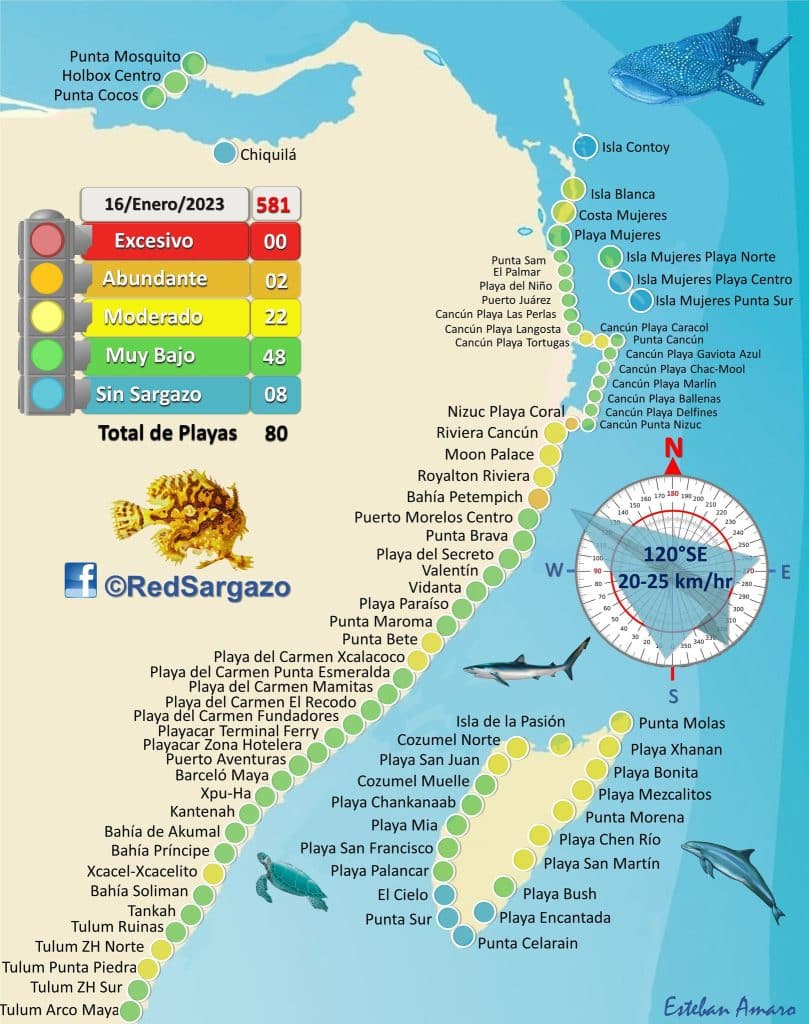
The latest update on seaweed in Cancun (January 2023)
As of January 2023, all beaches in Cancun and other beaches in the Mexican Caribbean will be free of seaweed. The arrival of seaweed begins in March and spreads over the entire area by the end of April. Therefore, the best time to visit is January and February. (Source: thecancunsun.com)
Frequently Asked Questions About Sargassum Seaweed 2023 Forecast
The Sargassum seaweed season in Cancun and around the Mexican Caribbean ends in October.
The Pacific and Gulf coasts of Mexico are not affected by sargassum seaweed.
The Sargassum seaweed season in Mexico lasts about 6 months. It starts in April and ends in October.
According to studies by the National Autonomous University of Mexico, sargassum was first discovered on the coast of Quintana Roo in late 2014 and increased in numbers in 2015. In 2018 the volume was worrying, but then it dropped.
However, according to Ojeda, the statistics projected today are much higher than at the 2018 peak.
″There is a prediction of about 32 thousand tons. We are working to prevent them from reaching the beaches and, if they do, to catch them.”
So far, 9,565 tons have arrived on Mexican beaches. Authorities have collected 9,467 on the coast and 97.7 in the sea.
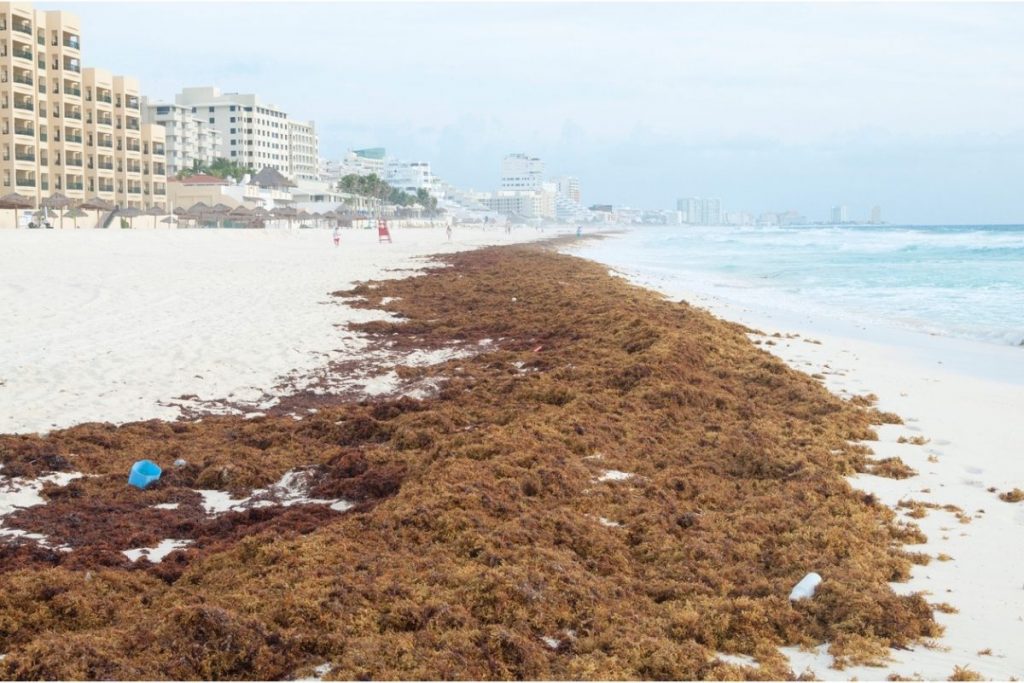
The government has taken a series of measures to combat the problem, especially in Quintana Roo, where Cancun is located and which has a higher number of visitors.
The Navy operates 11 seaweed collection vessels in the area, but data shows the amount collected at sea is declining year on year.
In 2020, the Navy eradicated 4% of sargassum in the water, but 96% was removed from beaches. Last year that number dropped to 3% and is now 1% in 2022. Apparently bad weather is hampering efforts.


